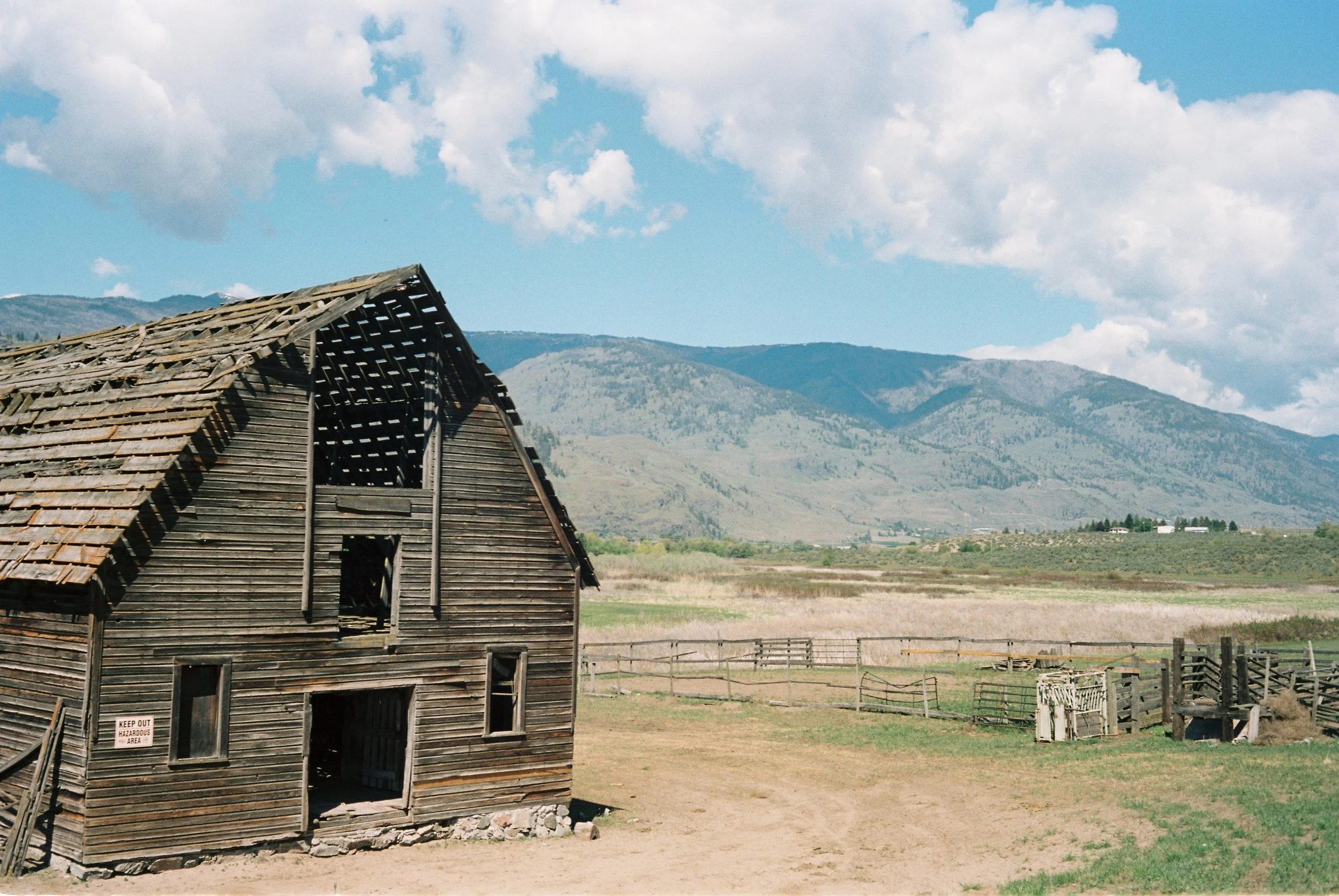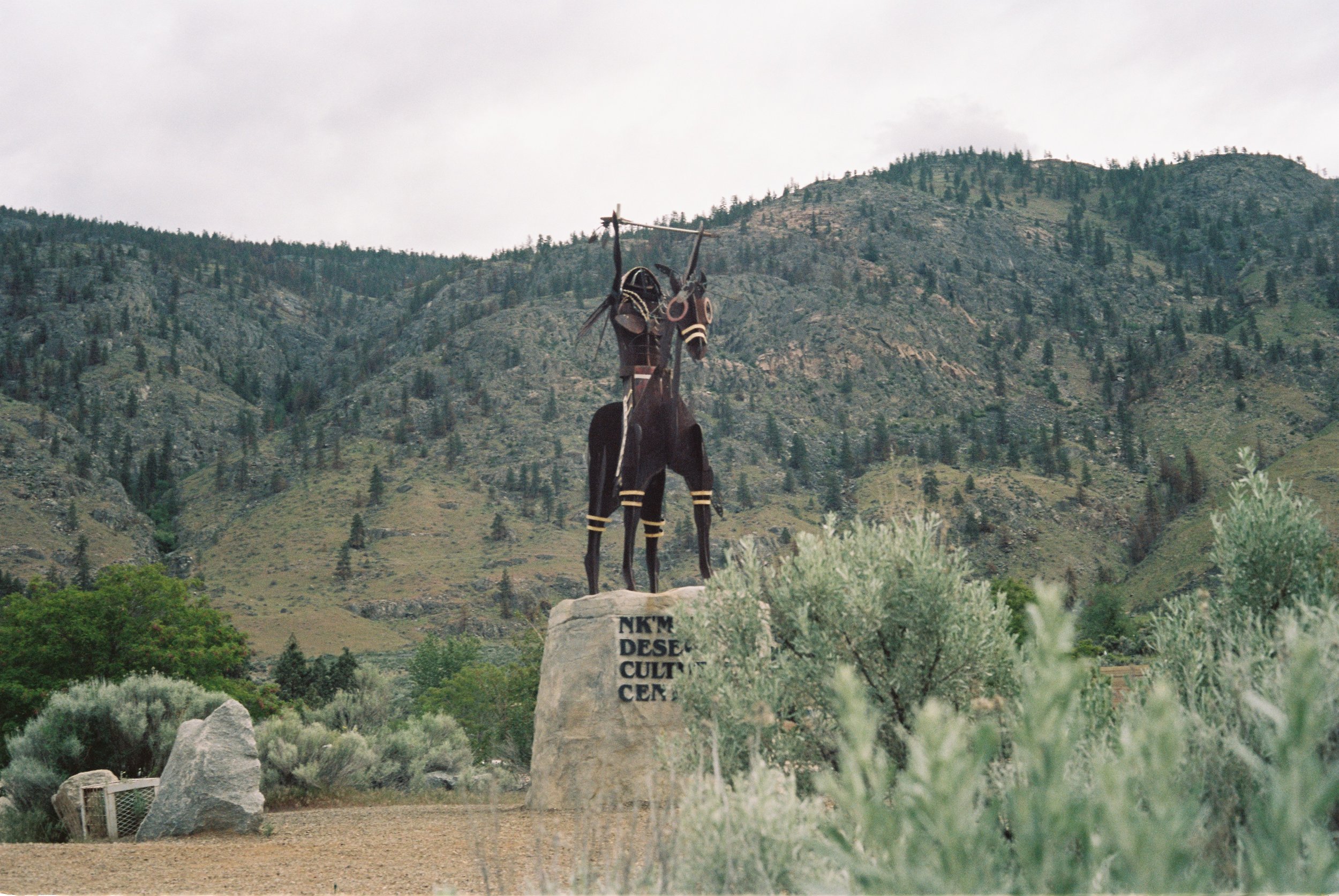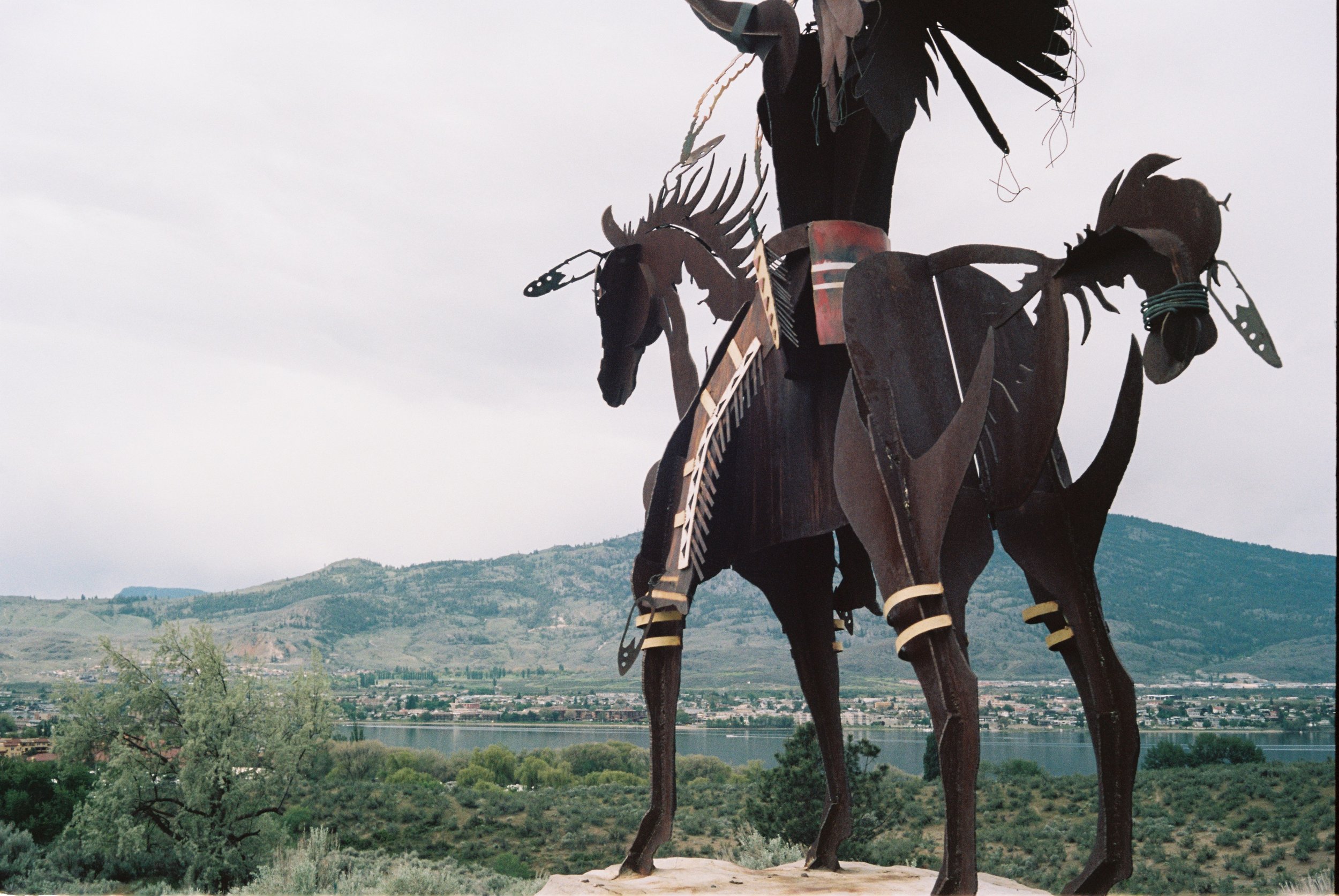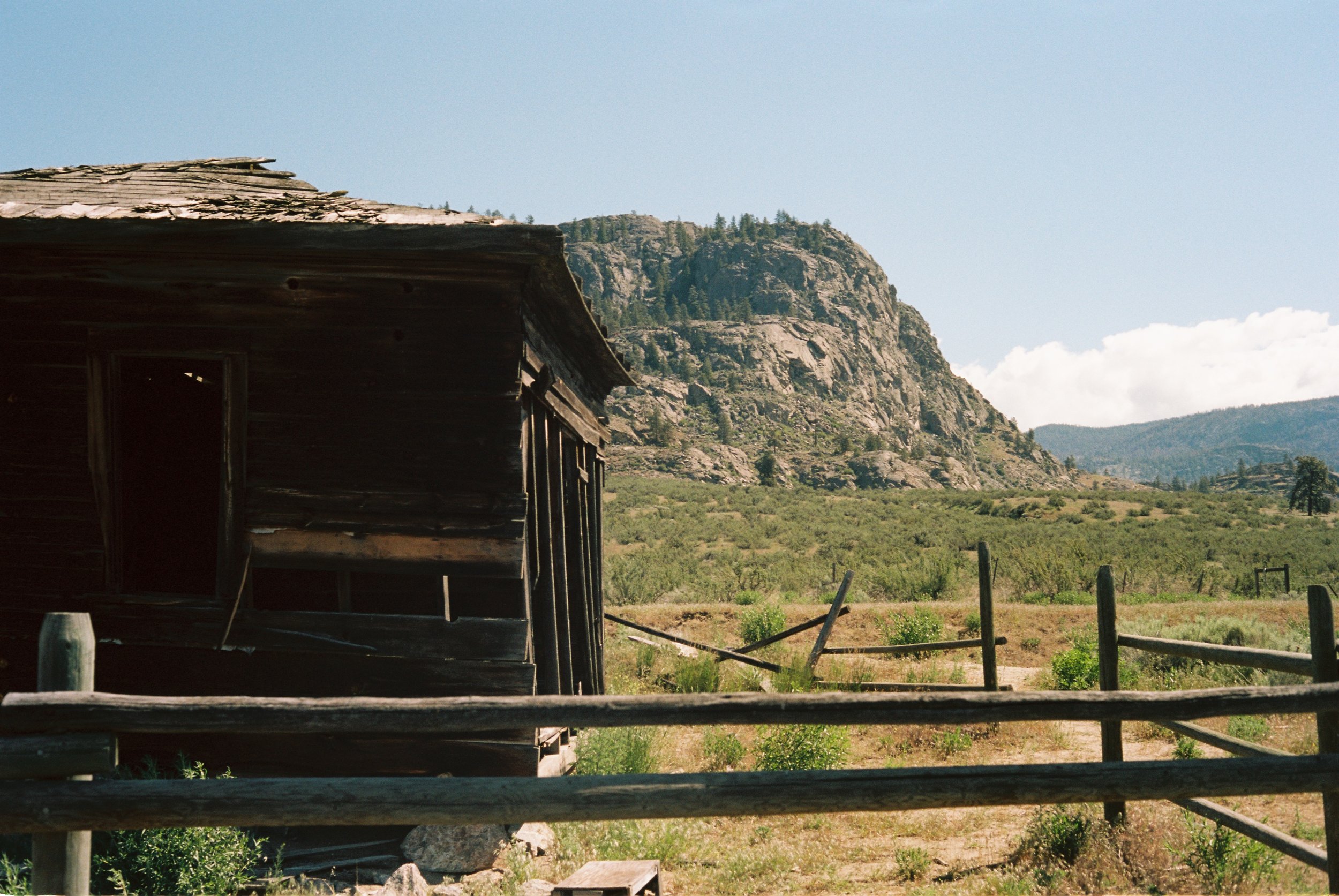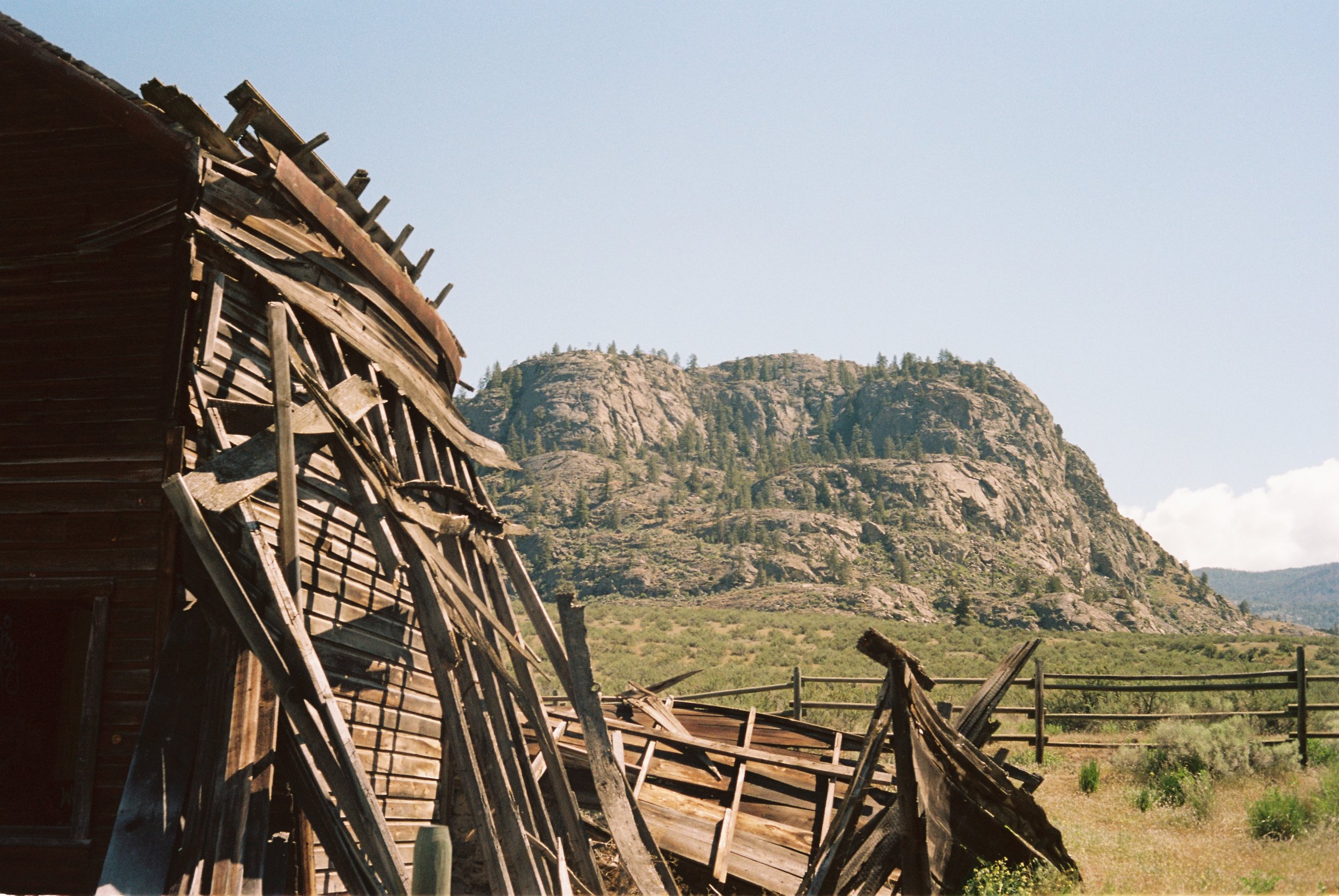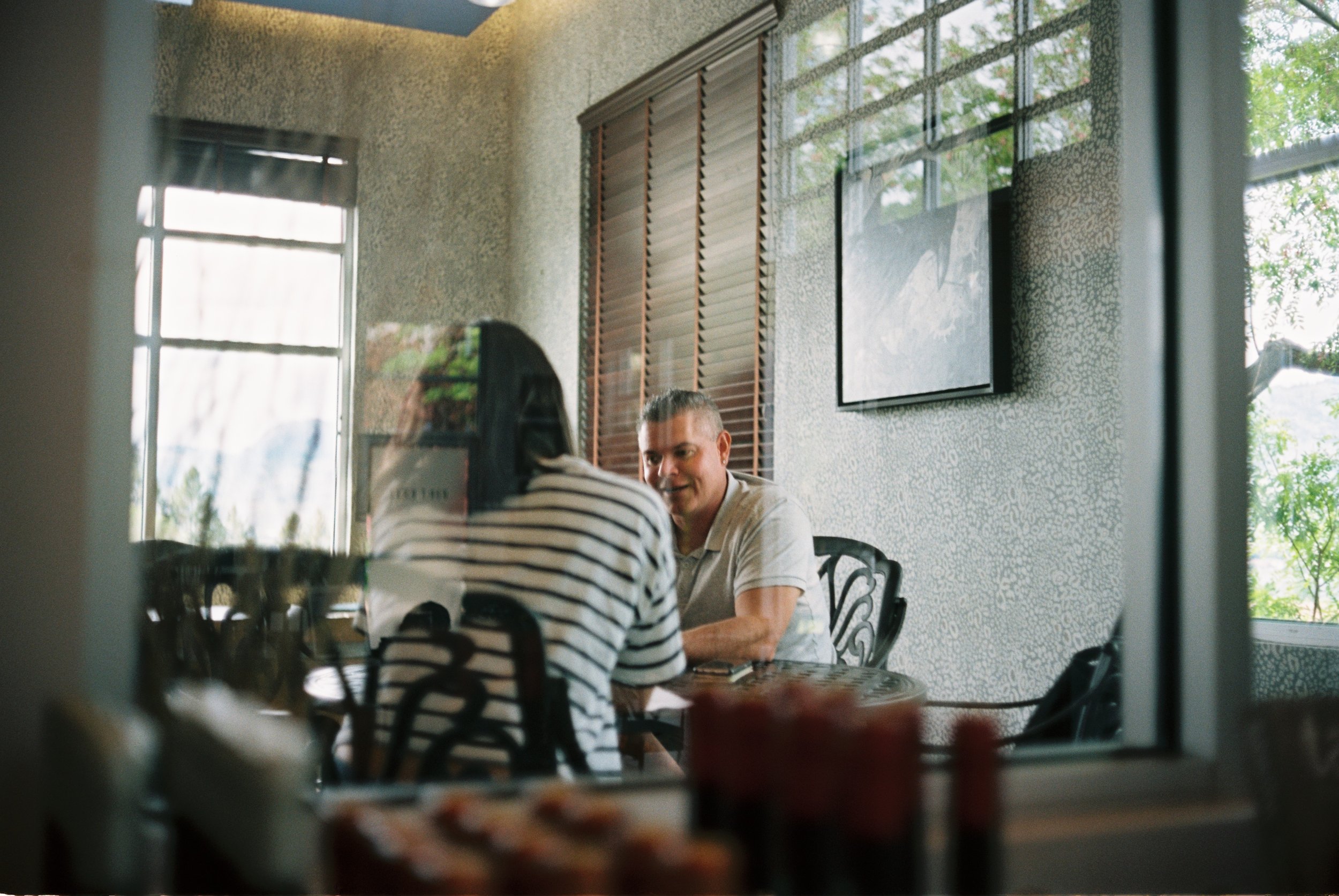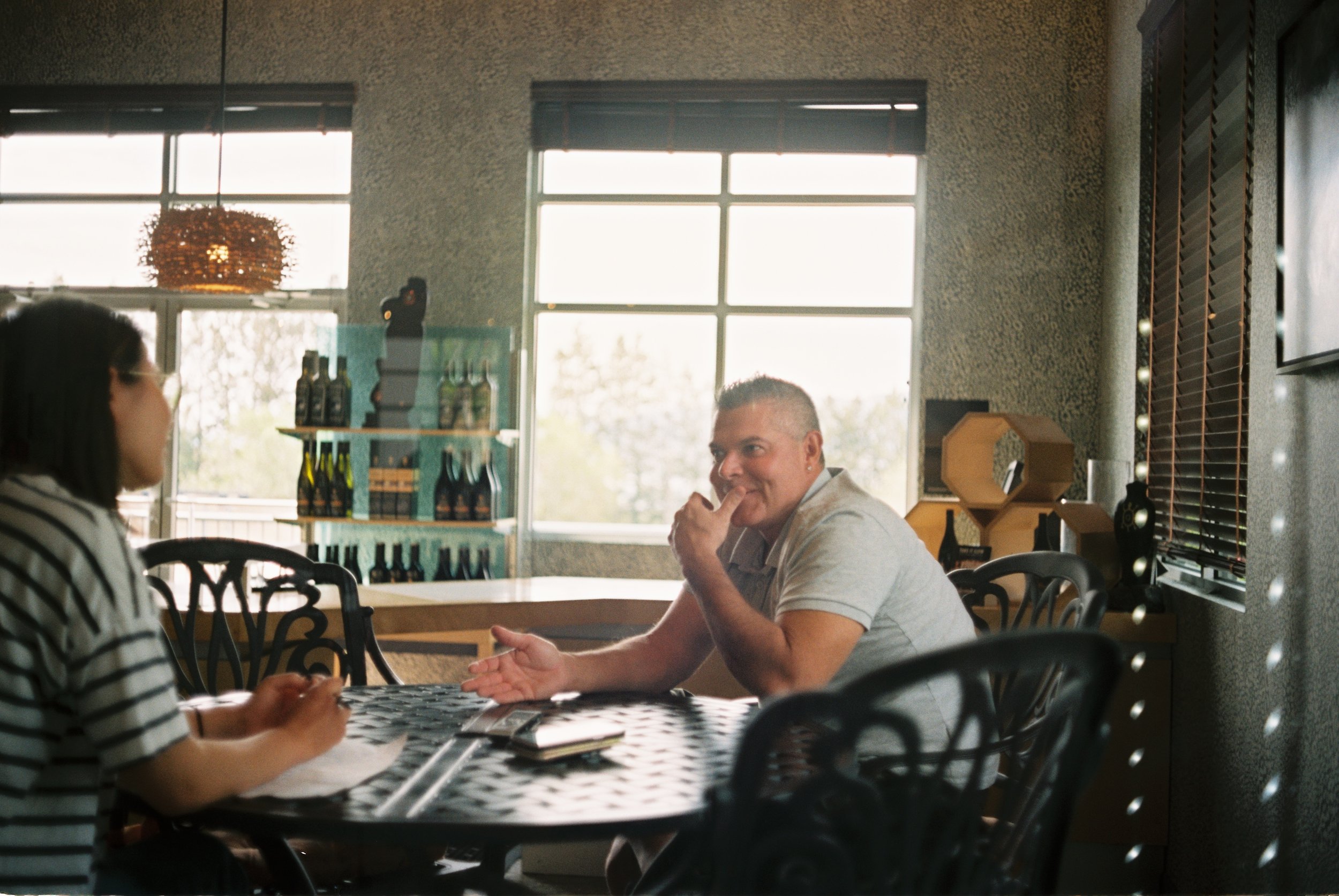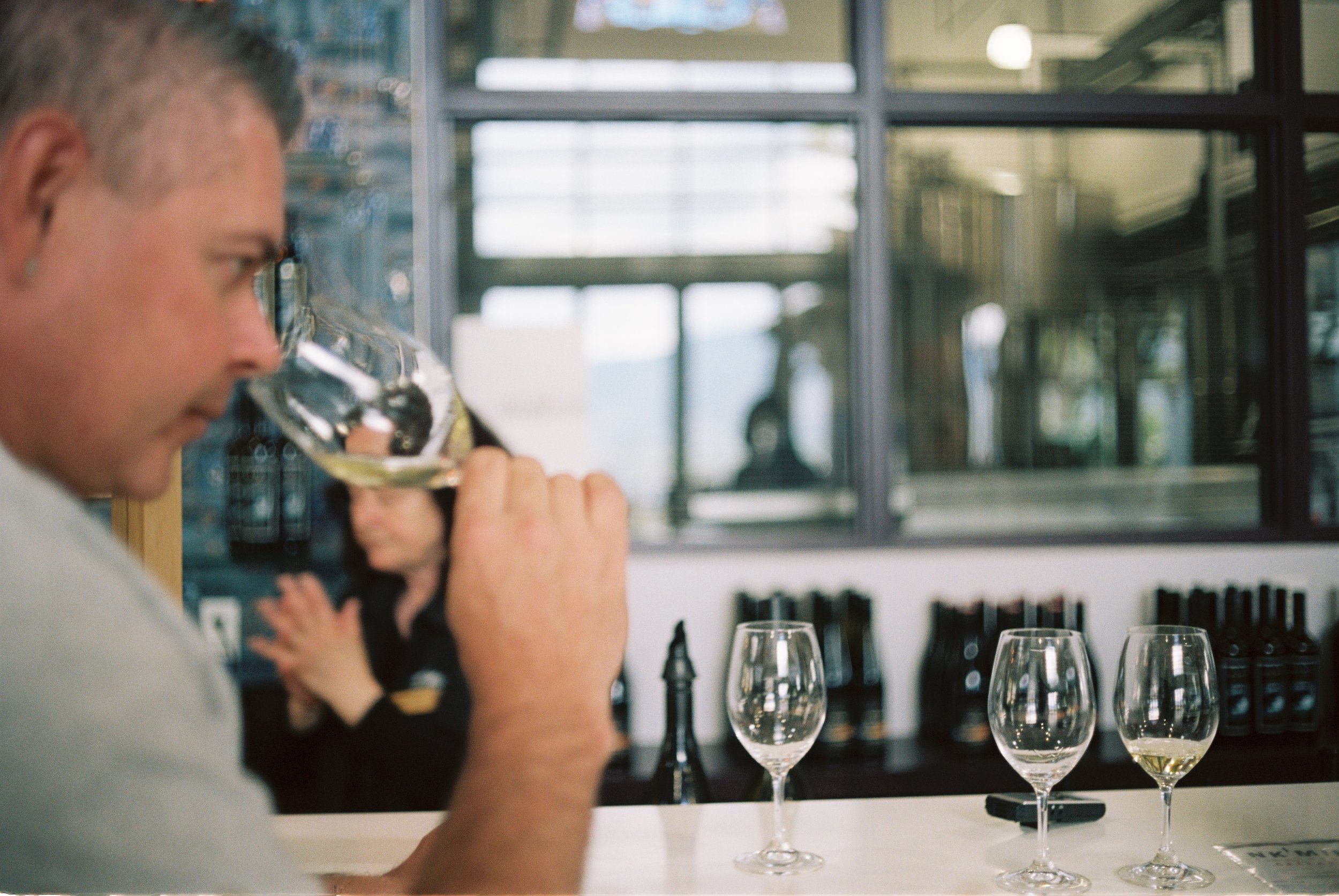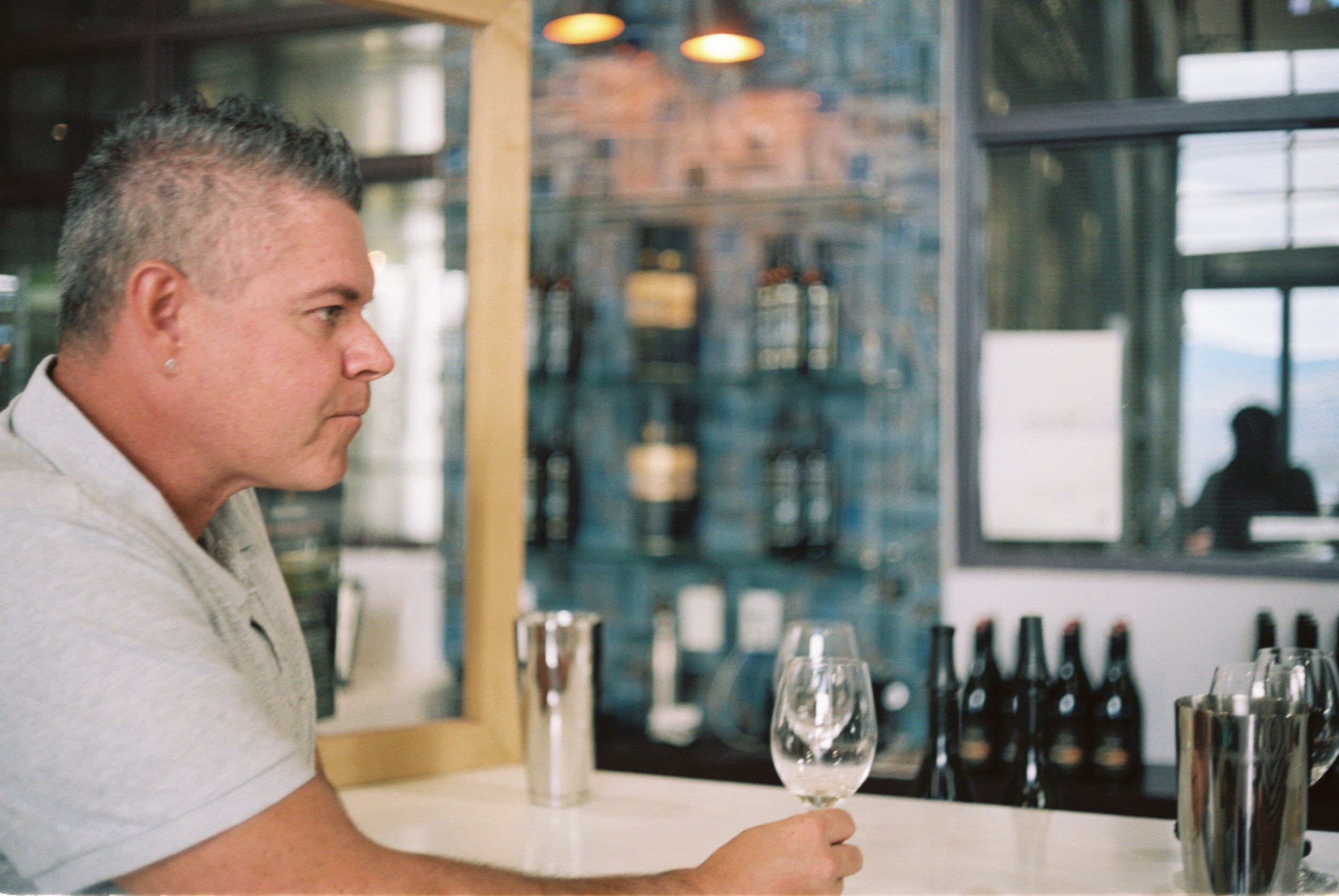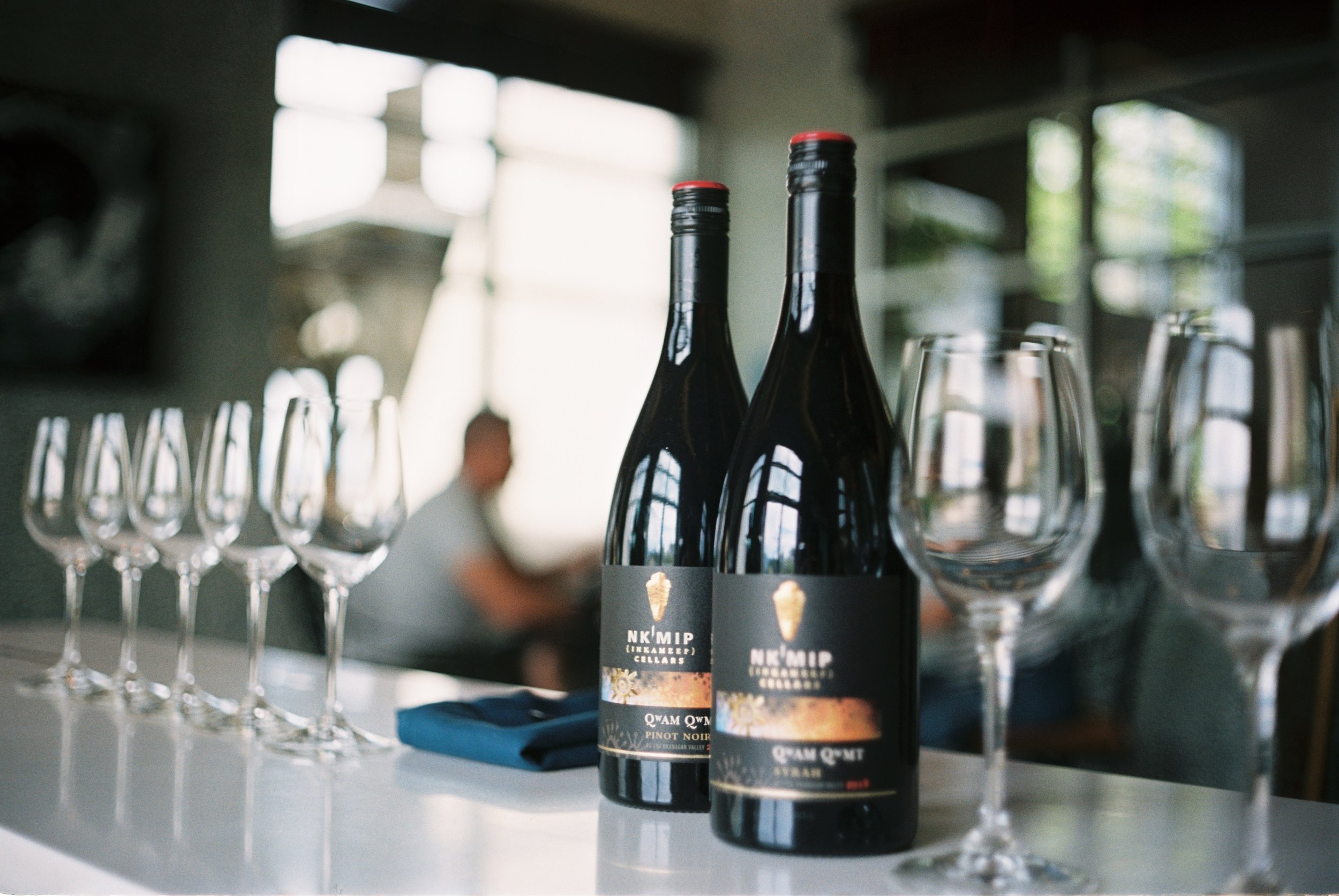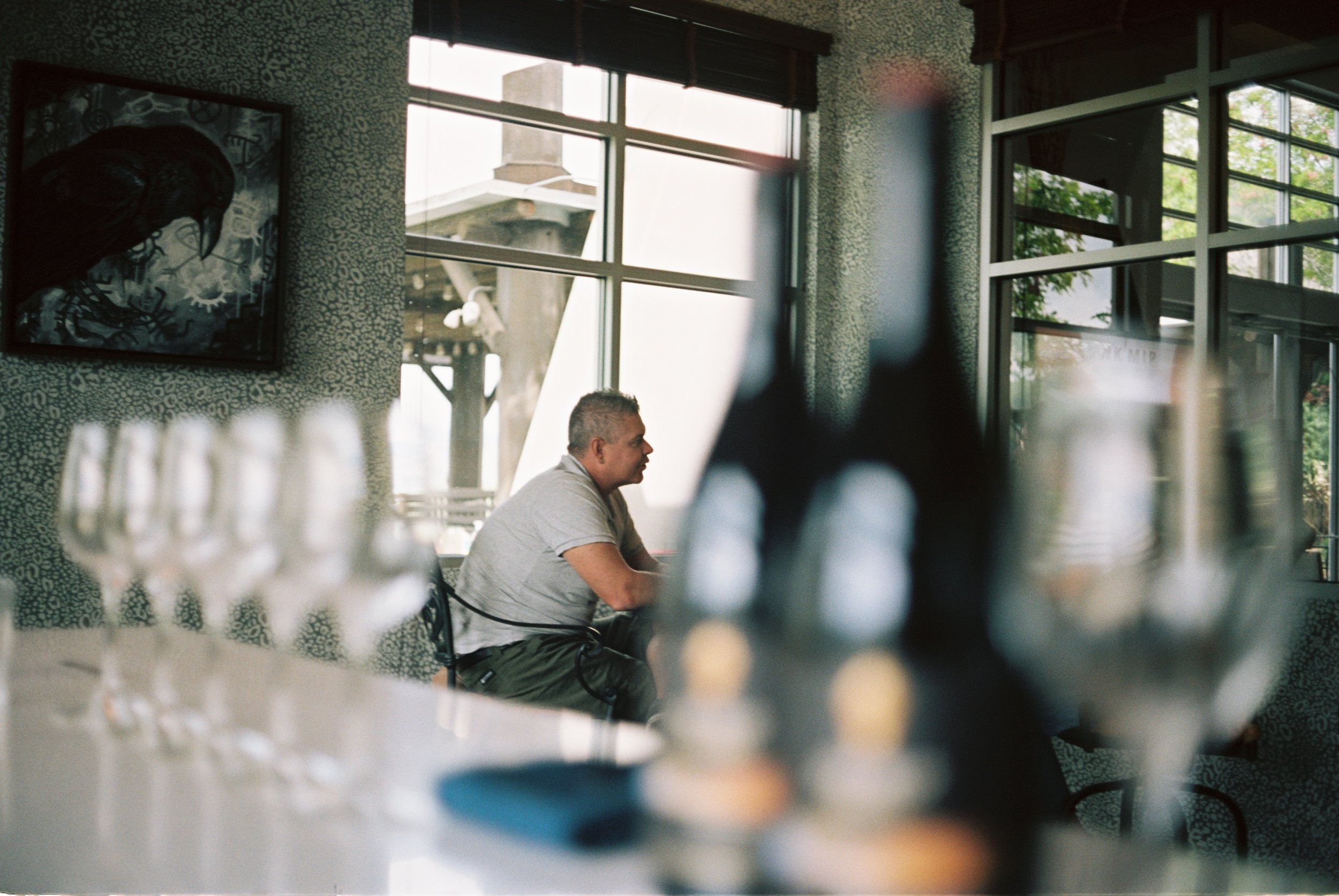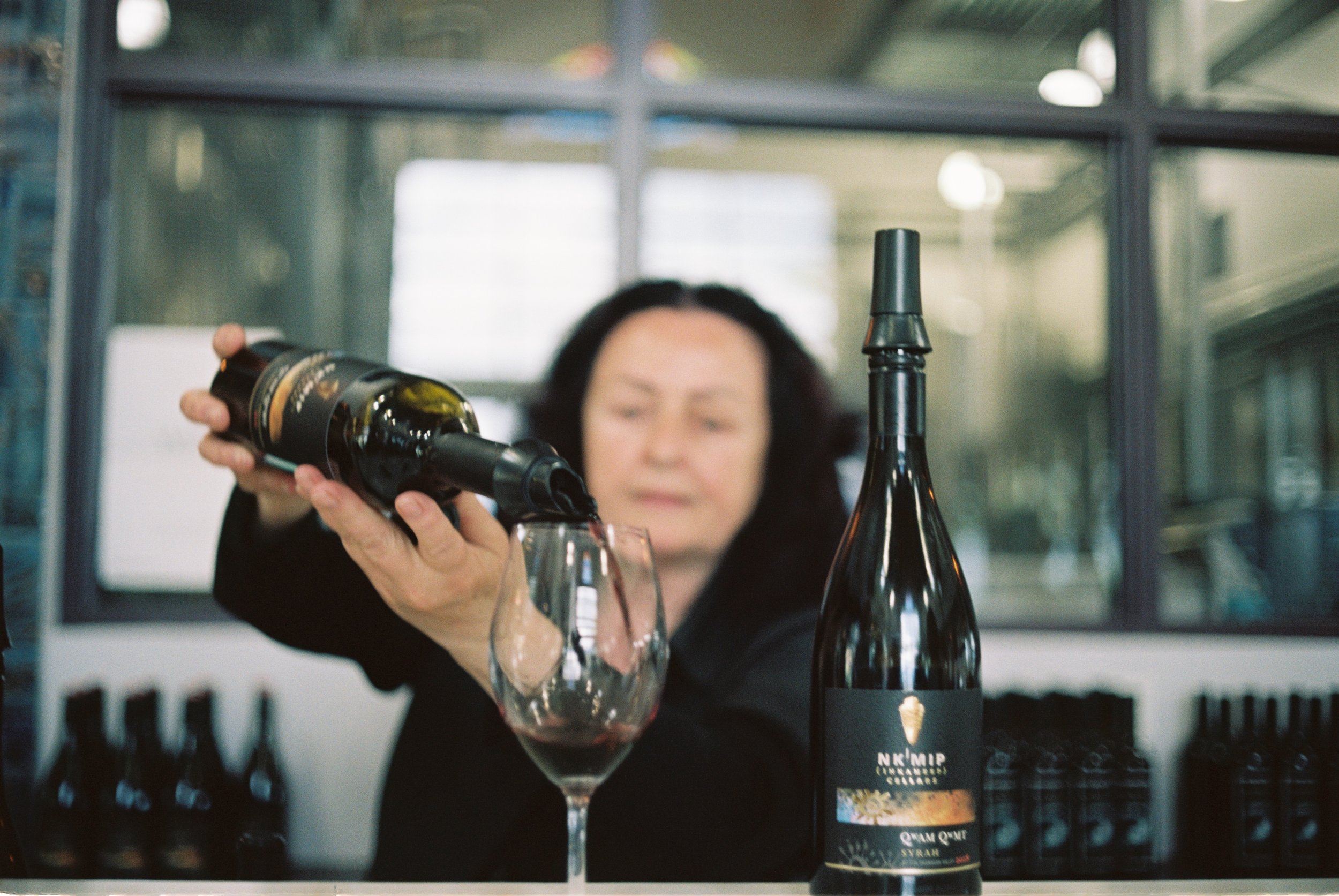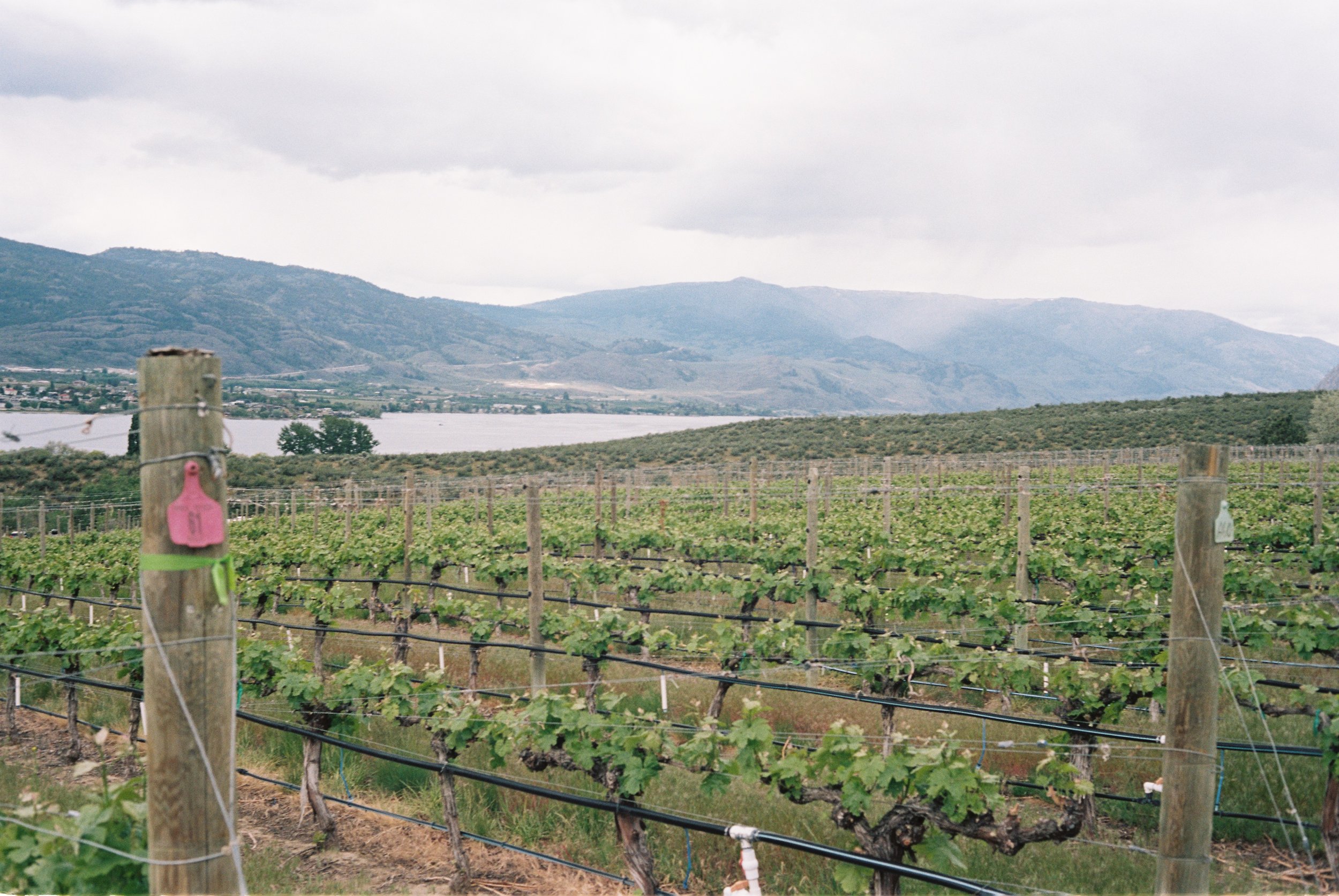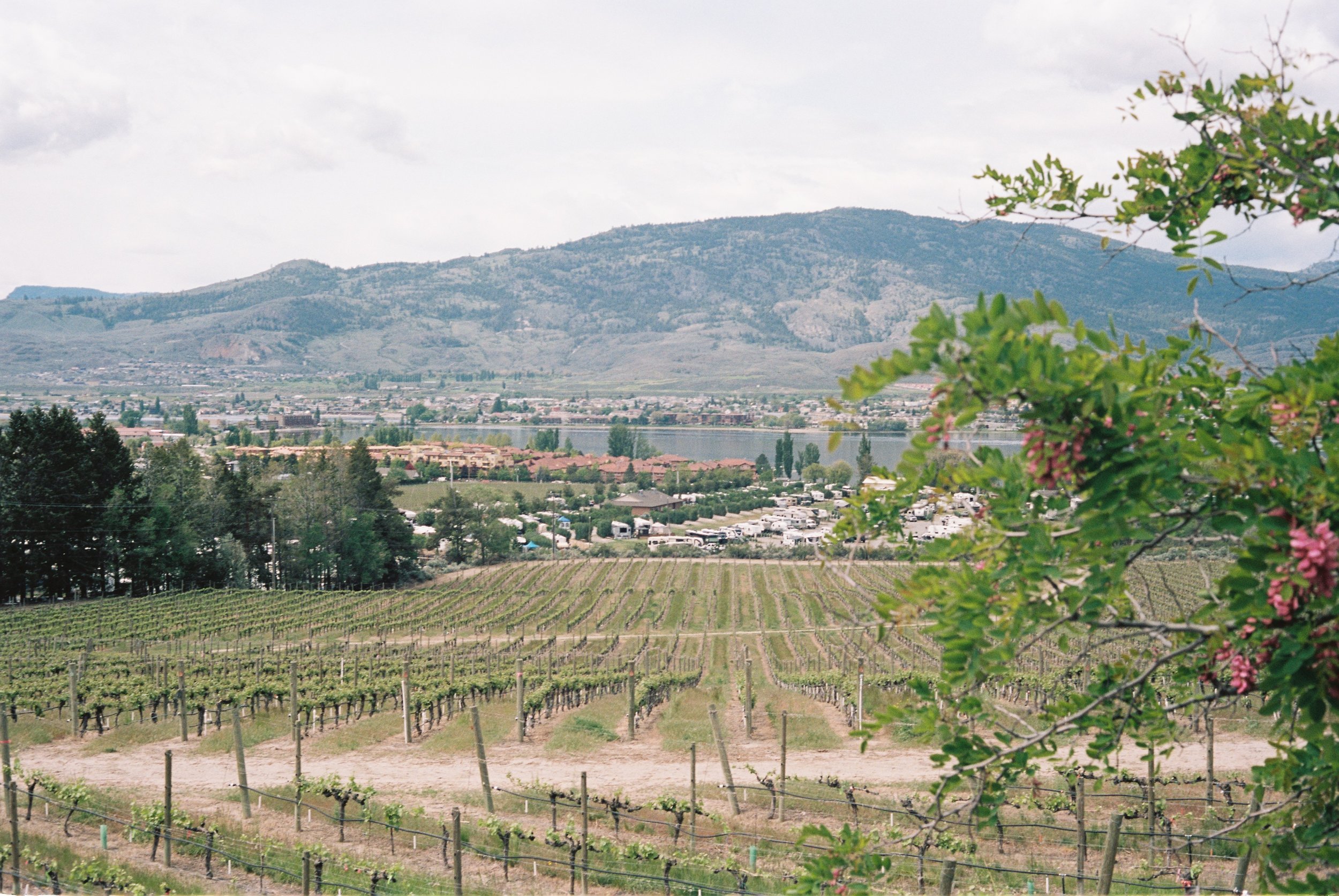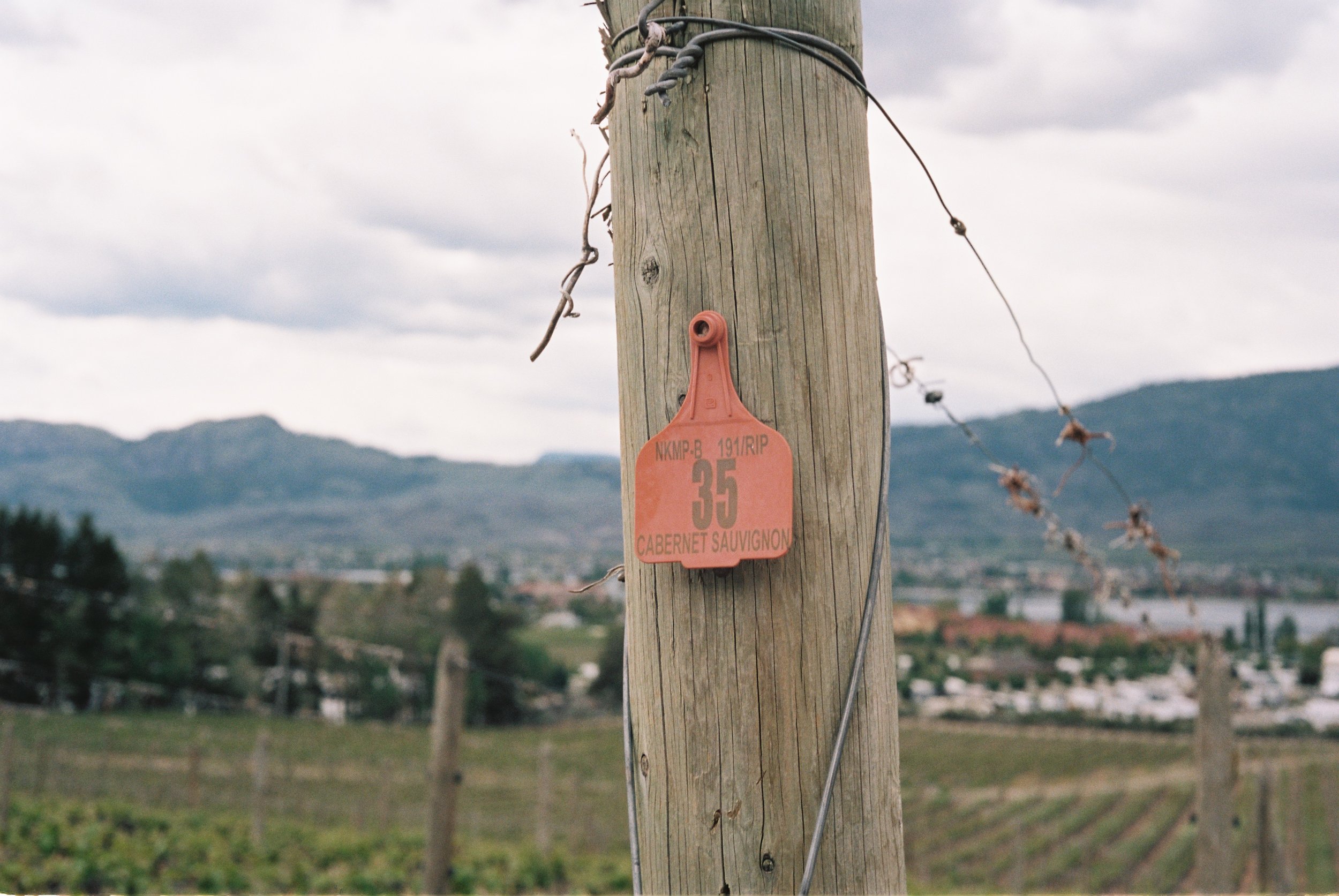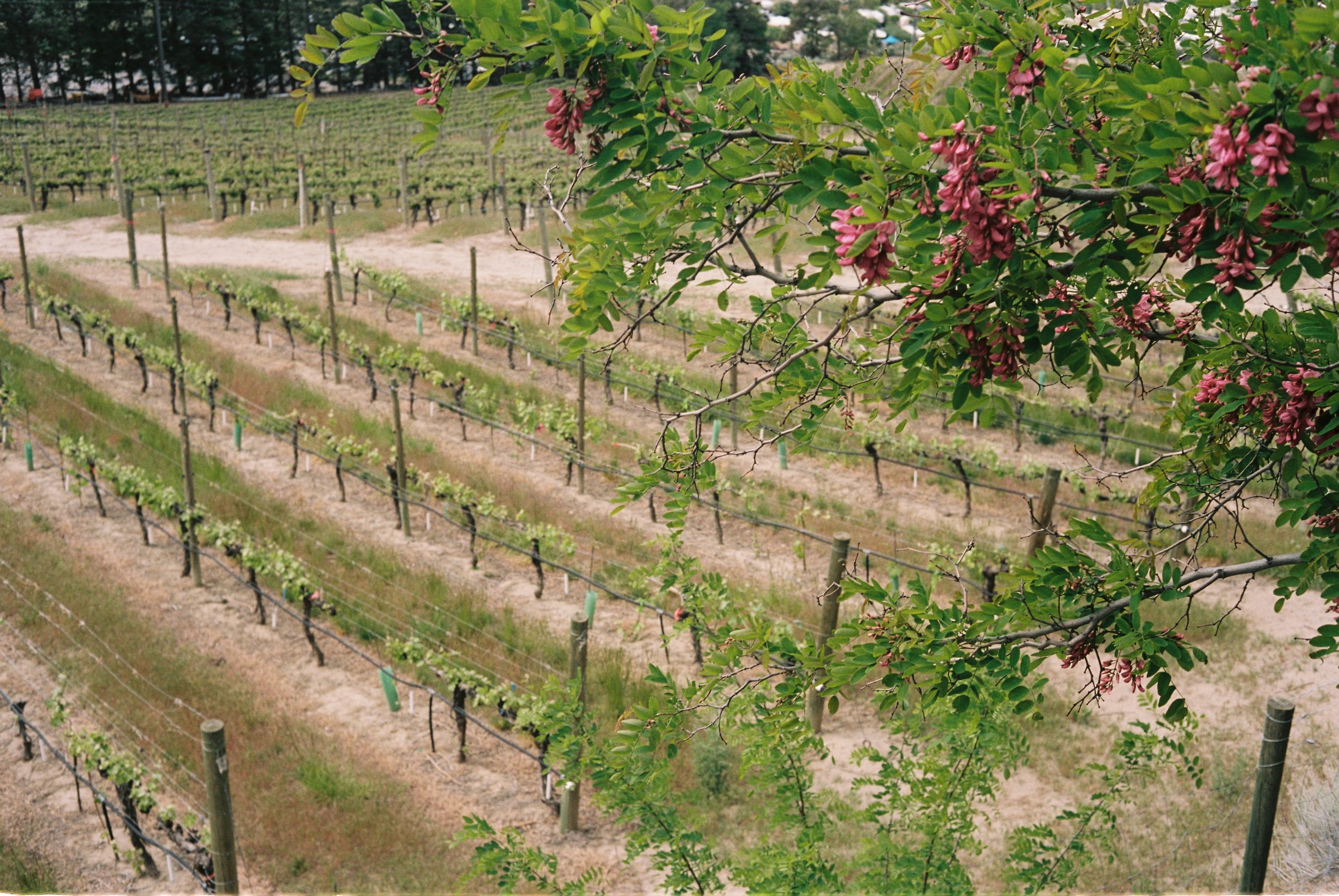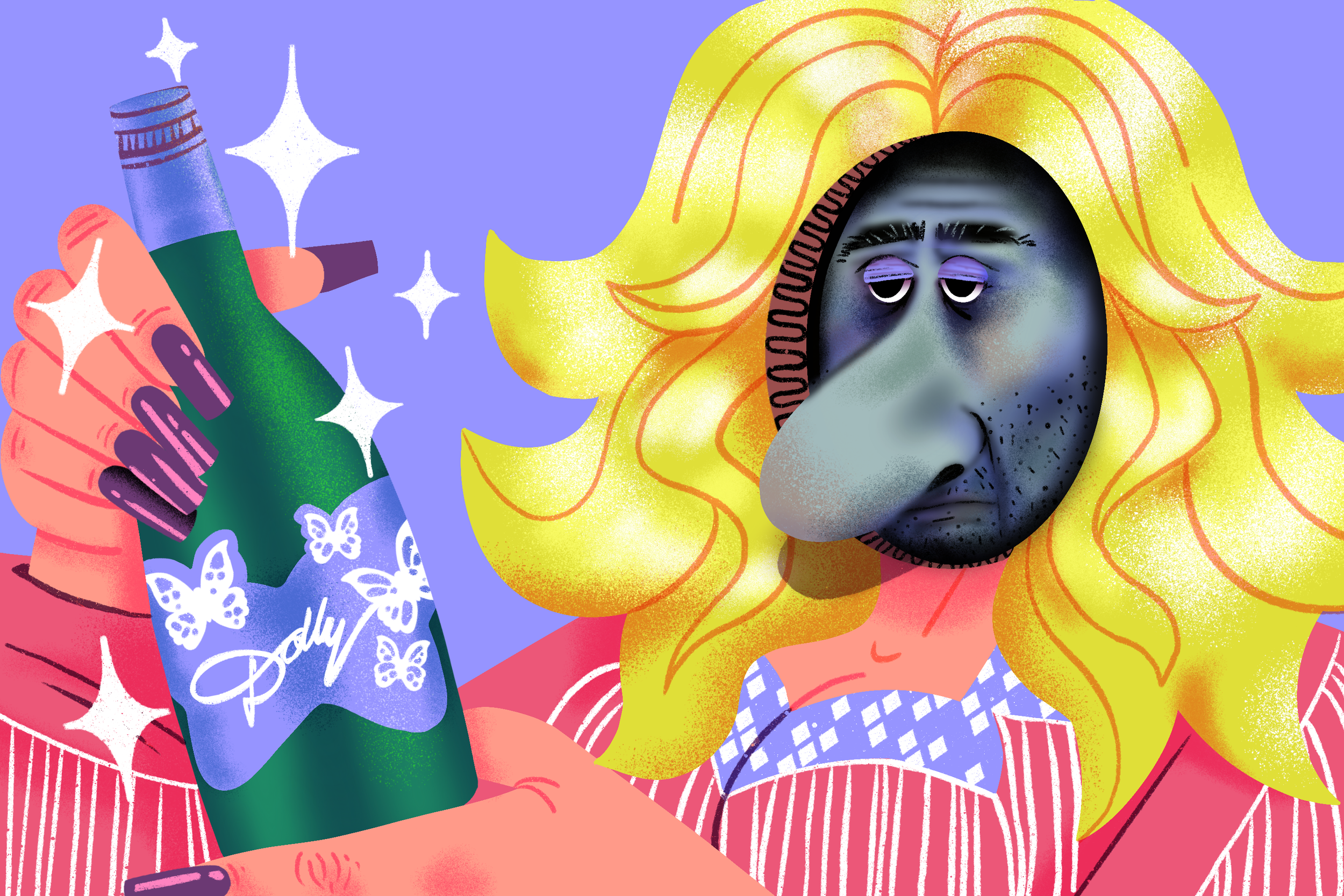Strong Roots — Honouring the Land with Indigenous Winemaker Justin Hall of Nk’Mip Cellars, Canada
Drop the words ‘Canadian wine’ into dinner party conversation and chances are people will think you’re talking about ice wine. This makes sense, considering Canada makes more of the stuff than any other place on Earth. But there’s another side to winemaking in the True North, one I didn’t realise until I moved there.
Picture this:
A desert… in Western Canada.
A winery… under an Indigenous head winemaker.
A First Nations government... partnered with Canada’s largest wine company.
Photography by Nick Lamb
That’s the unique story of Nk'Mip Cellars (pronounced ink-a-meep), the first Indigenous-owned and operated winery in North America.
I first came across a bottle of Nk’Mip’s Qwam Qwmt Cabernet Sauvignon 2017 in a liquor store in Vancouver, Canada. The full-bodied wine would go well with dinner, I thought, but it was the label that sealed the deal.
Qwam Qwmt (pronounced kw-em kw-empt) as spoken by the Osoyoos Indian Band translates to ‘achieving excellence’. This Estate wine is produced in limited quantities and sourced from the finest grapes grown on selected blocks in the Band’s vineyards in Western Canada.
Which got me thinking: How come there weren’t more Indigenous wineries? What would an Indigenous winery even look like? So I took a trip with my partner to find out.
The Okanagan Valley in what is now called British Columbia is home to the towns of Osoyoos and Oliver—the wine capital of Canada. As one local said (while pouring a glass of red), “Throw a rock around here and you’ll hit a good winery.”
Travelling along Black Sage Road from Oliver to Osoyoos, you can tell the different personalities of each winery by the architecture. There’s the charming yellow clapboard of Here's The Thing, run by an older couple who joke they’re too young to retire. Followed by the Silicon Valley vibes of Church & State Wines. Then the warm, welcoming terracotta of Desert Hills estate.
Nk'Mip is its own resort with a golf course, spa and hotel. At the entrance, we're greeted by the iron silhouette of a warrior on horseback. The arid landscape here—in Canada’s only desert—is nothing like the dense forests and snow-capped mountains we’d passed through on our way from Vancouver. Later, I’d learn why.
Nk'Mip Cellars opened in 2002 as a partnership between the Osoyoos Indian Band (OIB) and Vincor, which later became Arterra Wines Canada. But the seeds of its inception were sown more than 30 years earlier.
“When [Nk’Mip Vineyards] was created in 1968, with some funding provided by the federal government, it was our first business, 100 per cent band owned, and would become one of our largest employers,” said Chief Clarence Louie at the 50th anniversary of Nk’Mip Vineyards. Other OIB businesses include forestry, convenience stores, and even a golf course.
Chief Louie—whose book Rez Rules: My Indictment of Canada’s and America’s Systemic Racism Against Indigenous People is stocked in the Nk’Mip Cellars shop—is instrumental to the economic success of the OIB.
A community of about 570 members within the Okanagan Nation, the OIB started their foray into winemaking with what Chief Louie called ‘rocking chair money’—passive income from leasing some of the 32,000-acre OIB reserve which was created in 1877. It’s worth noting that it’s only a portion of the OIB’s traditional territory in the Okanagan.
Justin Hall, estate winemaker at Nk’Mip Cellars, is the first Indigenous winemaker in Canada and a proud member of the OIB. When I ask him to share something that a UK audience might not know, he says with a laugh, “We don't wear feathers! Not anymore, unless it’s traditional.”
Justin grew up in Osoyoos and joined Nk’Mip Cellars after graduating from high school. Initially, he’d dreamed of being a mechanic, but that quickly dissipated once he realised he was just fixing problems. So he asked around, took advice from elders and started as a cellar hand working at Nk’Mip. Within a week, he knew he wanted to be in the industry. From there, he took a viticulture course at Okanagan University College and then travelled to Australia and New Zealand to learn from their wine producers.
I asked Justin if he could expand on Nk’Mip Cellars’ origin story.
“At the time our people were fairly poor,” Justin says. “A lot of them were farmers and they would travel down to the United States where the work was, down in Washington.”
Bearing in mind the US-Canada border is only about 5km away.
“So the people were leaving and the chief, and I believe there was one council member, said, ‘Look, we can't have this anymore. What can we do here, in this area, that would be good for us?’”
While the OIB weren’t the first to grow grapes in the Okanagan (that would be the French Catholics in the 1860s, planting grapes for sacramental wine), they have certainly mastered the practice. Today, 12% of all grapes grown in British Columbia is from OIB land.
It also helps to have Mother Nature on your side. During peak growing season, Osoyoos sees nearly three hours more sunlight per day than California’s Napa Valley. With its hot summer days, cool nights and minimal rainfall, the region’s climate makes for award-winning wines. And although Nk’Mip Cellars isn’t organic, as the traditional guardians of the land, they try to be as sustainable as possible and that includes minimal intervention.
““We don’t wear feathers! Not anymore, unless it’s traditional.””
“The vines, you can always rip them out, you can always bring the land back to the traditional status,” says Justin. “It's not concrete, it's not a jumble of cement in factories. There's no chemicals—well, there's some fertilisers and things like that, but nothing that nature can't take care of as long as you take care of the land that you're on now. So sustainable farming, sustainable practices. We're not organic, but we do practice sustainability.”
But back to the winery’s roots. Justin explains how, in mapping out the Osoyoos Indian Reserve, the Canadian government kicked his people off the west side of the valley. “To put it plain and simple, the government back then said, ‘This land is far too valuable for, quote-unquote, Indians. Let's give them the shitty land on the other side.’”
Justin gestures towards the patio where visitors sit, sipping wine while overlooking the mirage-like lake. He’s talking about Golden Mile Bench, with its southerly aspect and rich soil perfect for orchards.
“You could see the farming potential,” Justin says. “But that kind of backfired. Because now, you look at this side of the valley and you think there's nothing more gorgeous on the planet than the nature that we've left here. This desert that you see is the very tip of the [Sonoran Desert] that spans up from Mexico.”
And there is something mesmerising about the desert. The day before, we’d gone horseback riding through the sand and the sage, basking in the heat and marvelling that this was so close to Raincouver.
With a wry smile, Justin asks, “What do you do when life gives you lemonade?”
Well, if you’re the OIB, you bottle it. Since opening its doors 20 years ago, Nk’Mip Cellars has doubled the number of wine bottles sold. Nowadays, it sells approximately 264,000 bottles of wine a year.
Let’s talk about the wine, as Nk’Mip Cellars produces three tiers. There’s Winemakers Tier, offering your everyday red and whites. Of these, the sweet, floral white blend Dreamcatcher is a particular favourite—think citrus fruits and summer holidays. It’s a blend of Riesling, Ehrenfelser, Sauvignon Blanc, and Pinot Blanc, with a dash of Chardonnay and Semillon for good measure.
Then there are the premium table wines in the Qwam Qwmt tier, affectionately shortened to QQ in the tasting room. As mentioned, these bottles are limited and sourced primarily from grapes grown on the oldest parts of the Nk’Mip Vineyards.
Lastly, there is the Mer’r’iym (pronounced mur'-eem) and the White Mer’r’iym, both of which are named for the word ‘marriage’ in the Okanagan language. As I take a sip of the white, I’m transported somewhere exotic via the strong scent of pineapple and passion fruit. The crisp freshness is a relief—like a storm breaking—and I make a mental note to pick up a bottle or two.
“The weirdest thing is I had COVID about six weeks ago now,” Justin says, as he talks us through the tastings. “I lost my sense of smell after six days.”
““The vines, you can always rip them out, you can always bring the land back to the traditional status.””
He must have seen the shock on my face.
“Oh, yeah, I got it really bad,” he continues. “Even now, when I exercise in the mornings, I get winded extremely fast. But it's still hard for me to smell. I can pick up little bits of fruit and things like that, defects, but I don't smell the full wine—even today.”
Still, as we swirl and spit, swirl and spit, Justin rattles off varietal percentages and tasting notes like the old hand he is. When we come to tasting the Winemakers Chardonnay, Justin elaborates on the choice of wood barrels.
“It’s about thirty-five per cent new oak,” says Justin. “They're all in French oak barrels, we don't use any American oak in our Chardonnay portfolio. [We use] a little bit in Cab Sav and Syrah and Merlot, but mainly French oak we prefer. Some of the American oak does give you a bit of a sweetness that's really nice, but I like the spice and the mouthfeel of the French oak better.”
On the rosé, Justin asks, “Do you get small amounts of strawberry? Just very light strawberry, like field strawberries. I don't know if you've ever had a field strawberry, they’re tiny little guys. Little drops of, like, ‘Oh!’”
At that, Justin spreads his fingers like a star. I nod, because it clicks, and I’m impressed by how a trained palate can pinpoint not only strawberry but field strawberry. Little drops of ‘Oh’. What a wonderful way to describe a fruit. What a wonderful way to taste wine.
When people talk of wine at tastings, they almost always talk of terroir. How could they not? Environment matters. But ‘a sense of place’ takes on a whole new meaning here.
Justin’s ancestors, the Okanagan First Nation people, have lived in this region since time immemorial. Everything—from the Indigenous artwork on the bottle labels to the dugout canoe in the Nk’Mip cellar—is a celebration of their unique culture. As the OIB motto goes, “In business to preserve our past by strengthening our future”.
Driving back to Vancouver, with the traffic and the weather and our day jobs, feels like a bumpy descent to earth. It’s ‘June gloom’ for the foreseeable and I’m glad we’ve got a few bottles of Nk’Mip sunshine stowed away. You know, for a rainy day.


